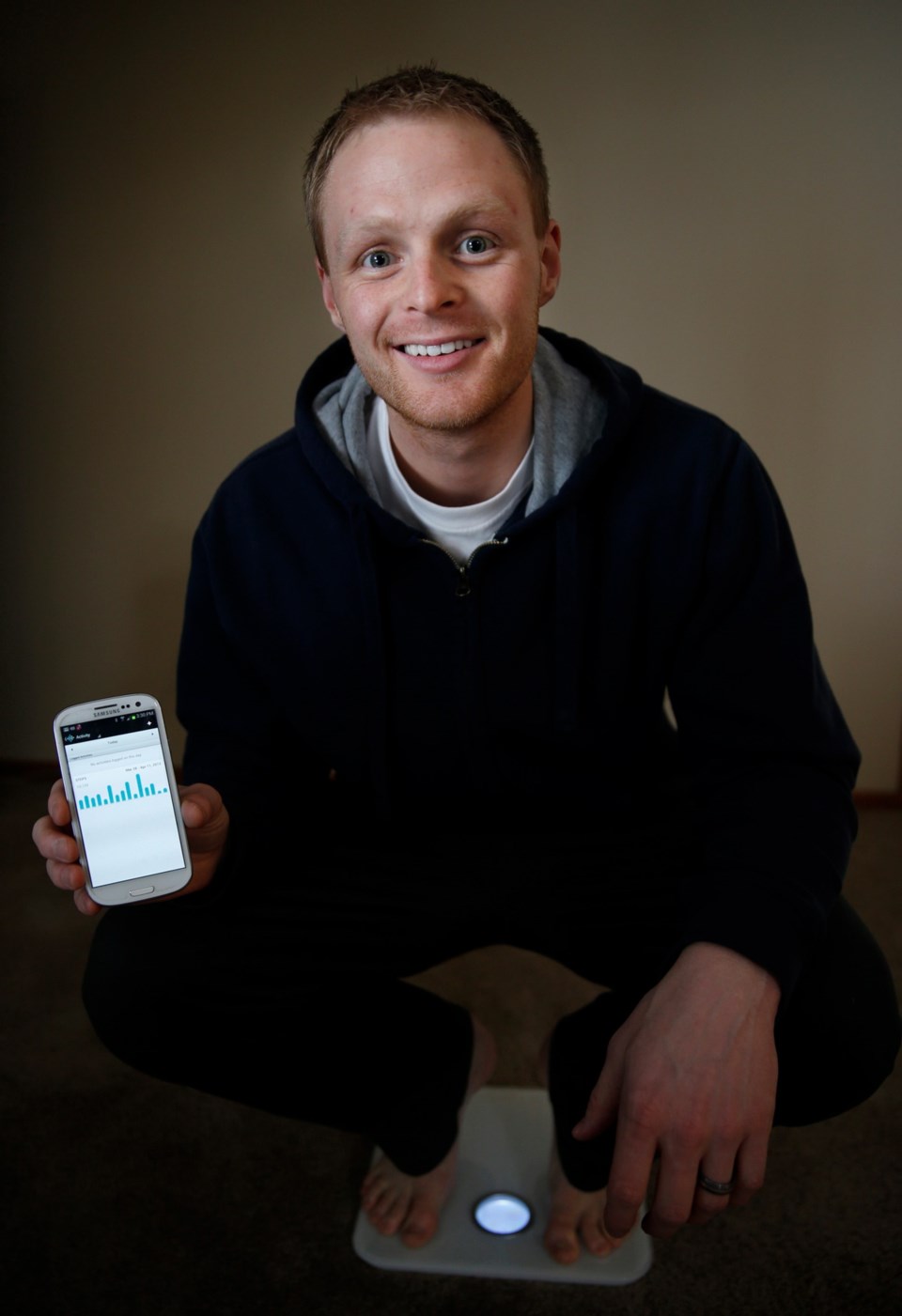MINNEAPOLIS — Jared Sieling’s first experiment was on his diet.
For weeks, he diligently recorded everything he ate until the data revealed a nutritional gap: not enough protein. Next, he strapped on a device to monitor his activity level. The numbers revealed the software engineer was a slug, averaging fewer than 1,000 steps a day — well below the recommended 10,000-step mark.
“That was the big ‘aha’ moment when I realized, ‘Oh, this is a big problem,’ and started to fix it,” he said.
Sieling, 27, of Maple Grove, Minnesota, is part of the rapidly growing “quantified self” movement — the practice of collecting data on everything from diet to blood sugar to sleep patterns and mood levels. Also called self-tracking, bio-hacking or “qs,” it involves measuring and analyzing the body’s inner workings for optimum health.
Once used only by elite athletes, self-tracking is becoming more accessible to everyday folks as tracking devices go high-tech. Instead of single-use pedometers, devices such as Fitbit, Jawbone UP and Nike+ FuelBand can monitor heart rate, calculate calories and count the number of stairs you climb or the quality of your sleep.
For some, it’s merely a quirky hobby, born out of a fascination with numbers that borders on obsession. Others, whom Sieling calls “elite livers,” see it as a way to take charge of their own health — a powerful new tool that could lead to early detection of diseases and better management of chronic ones.
Health professionals, however, remain guarded about self-tracking. While many acknowledge its proven results in areas such as weight loss, they caution that the volumes of information netted by new technologies could become overwhelming.
Yet that hasn’t dimmed the enthusiasm of Sieling and other members of the Quantified Self Minneapolis meetup group.
While a meetup for self-tracking may seem extreme, 70 per cent of American adults say they track some aspect of health, either for themselves or for someone else, according to the Pew Research Center.
In the first U.S. study of its kind, Pew found that most people track things such as weight, diet or exercise routine. And about a third of those surveyed said they also track their blood pressure, blood sugar, headaches, sleep patterns or other health indicators.
The study found that 46 per cent of trackers said the activity has changed their overall approach to maintaining their health or the health of someone they care for. In addition, 40 per cent of trackers said it led them to ask a doctor questions or to get a second opinion from another doctor.
Consider the computer scientist in California who, by analyzing his stool samples, noticed a disturbing pattern that led to an early diagnosis of Crohn’s disease. That scientist, Larry Smarr, is a legend in quantified-self circles who shares his story on websites and at meetups.
He started out like most trackers do, gathering data on his nutrition and exercise habits. He added sleep and ratio of fatty acids to his self-examination regimen, even signing up for a personal blood-testing service. Then, he began studying his poop. After noticing abnormalities, he pressed for more testing and eventually doctors diagnosed him with Crohn’s.
Doctors are taking notice of the boom in apps and other technology to help trackers. “There’s a lot of discussion about whether these things could be used for chronic diseases. There’s a big interest in home monitoring,” said Dr. Michael Joyner, professor of anesthesiology at the Mayo Clinic and a physiologist.
Joyner, who describes himself as an “agnostic” on the quantified-self movement, said there are conflicting reports about its effectiveness and many questions. But, he added, “There’s a lot of hope that it will work.” Still, he says of dedicated self-trackers: “Are they living life or are they tracking life?”
Erin Klegstad, 33, of St. Paul, Minnesota, is training for her first ironman competition and is using tracking to chart her body’s performance. She uses the TrainingPeaks website to log data from her workouts.
She keeps track of her times during a swim workout. She wears a heartrate monitor while running and biking. She connects her Garmin handheld device to her computer and it shows her heart rate throughout a workout.
Studying the results one day, she was able to pinpoint a drop in her heart rate, deducing that it happened as she stopped at a stoplight during a run.
“You can look at fancy graphs and charts,” Klegstad said. “I can look back at when I was training for my first marathon. I can compare times to see how far I’ve come.
“For me, it’s more curiosity. I just like to see the numbers and [it’s] fun to watch it all. It’s taught me what my body can do and makes me push harder.”



